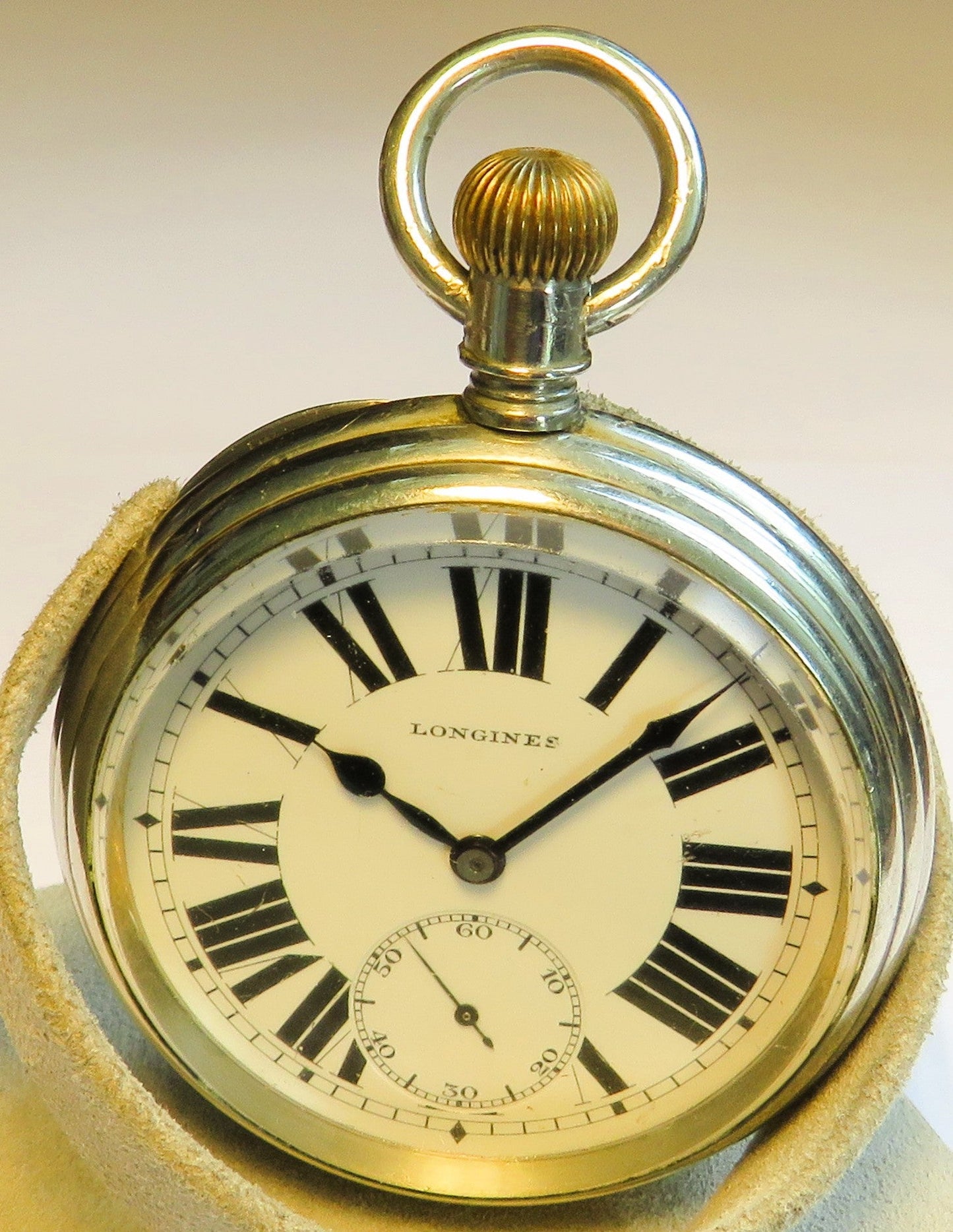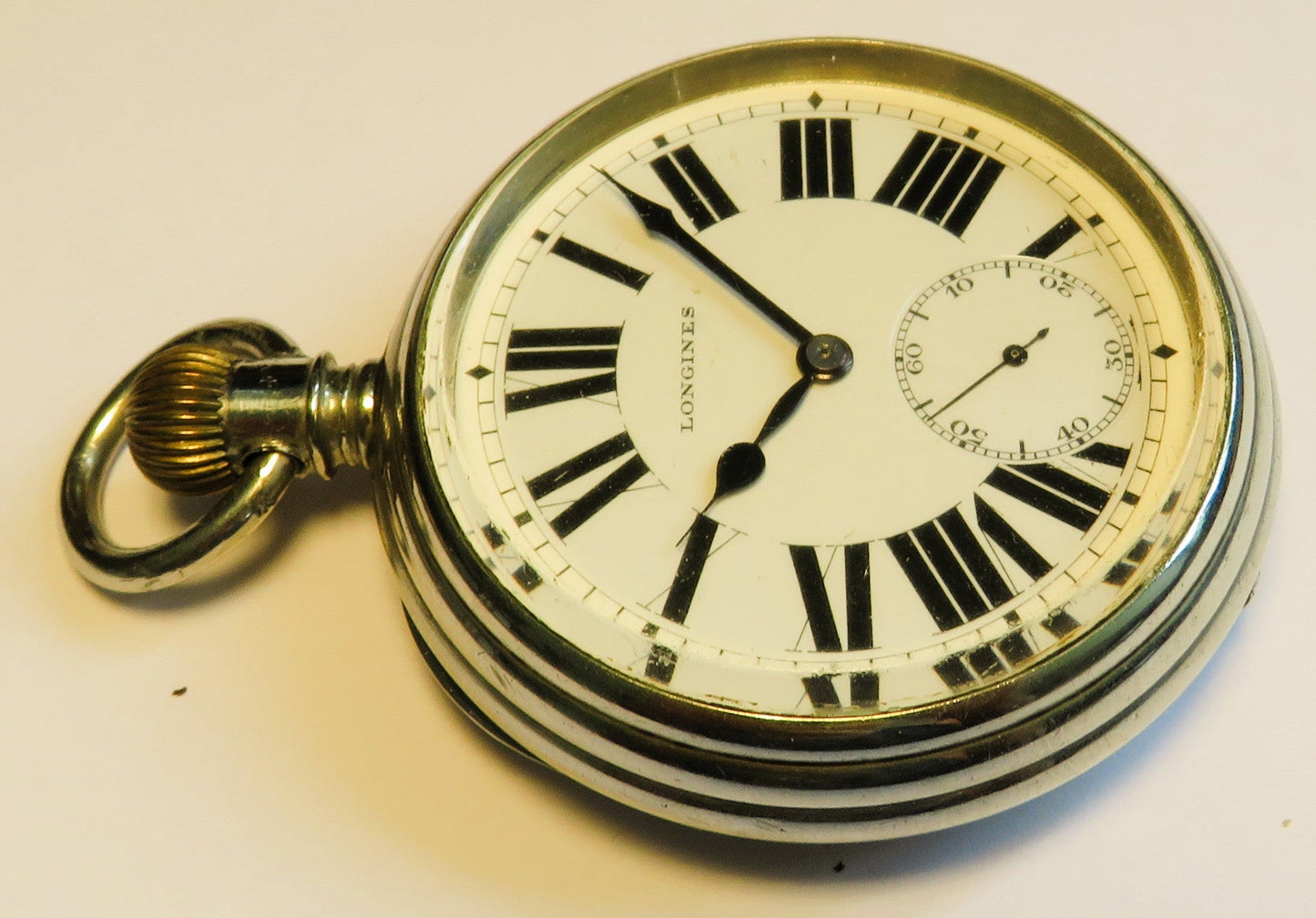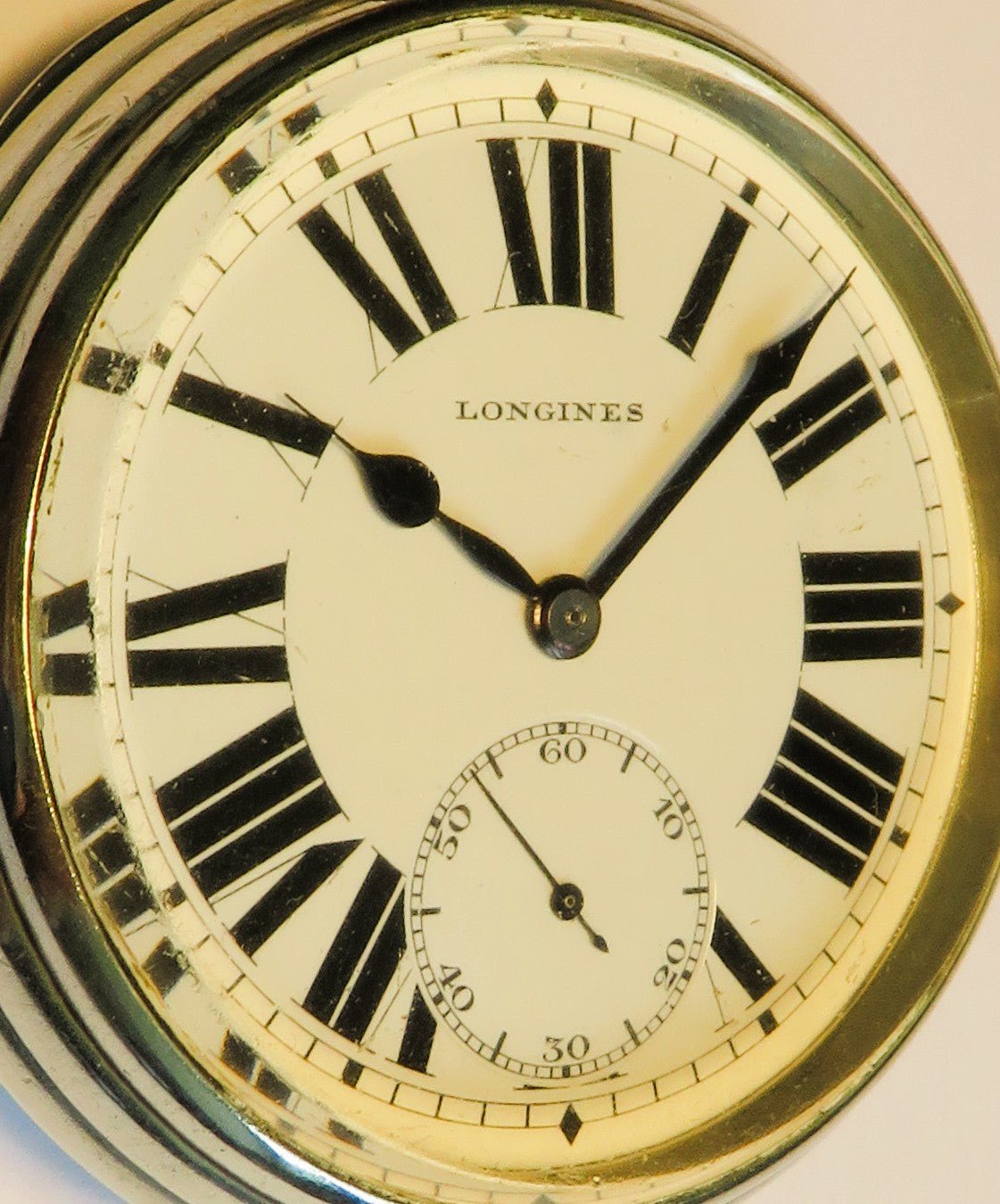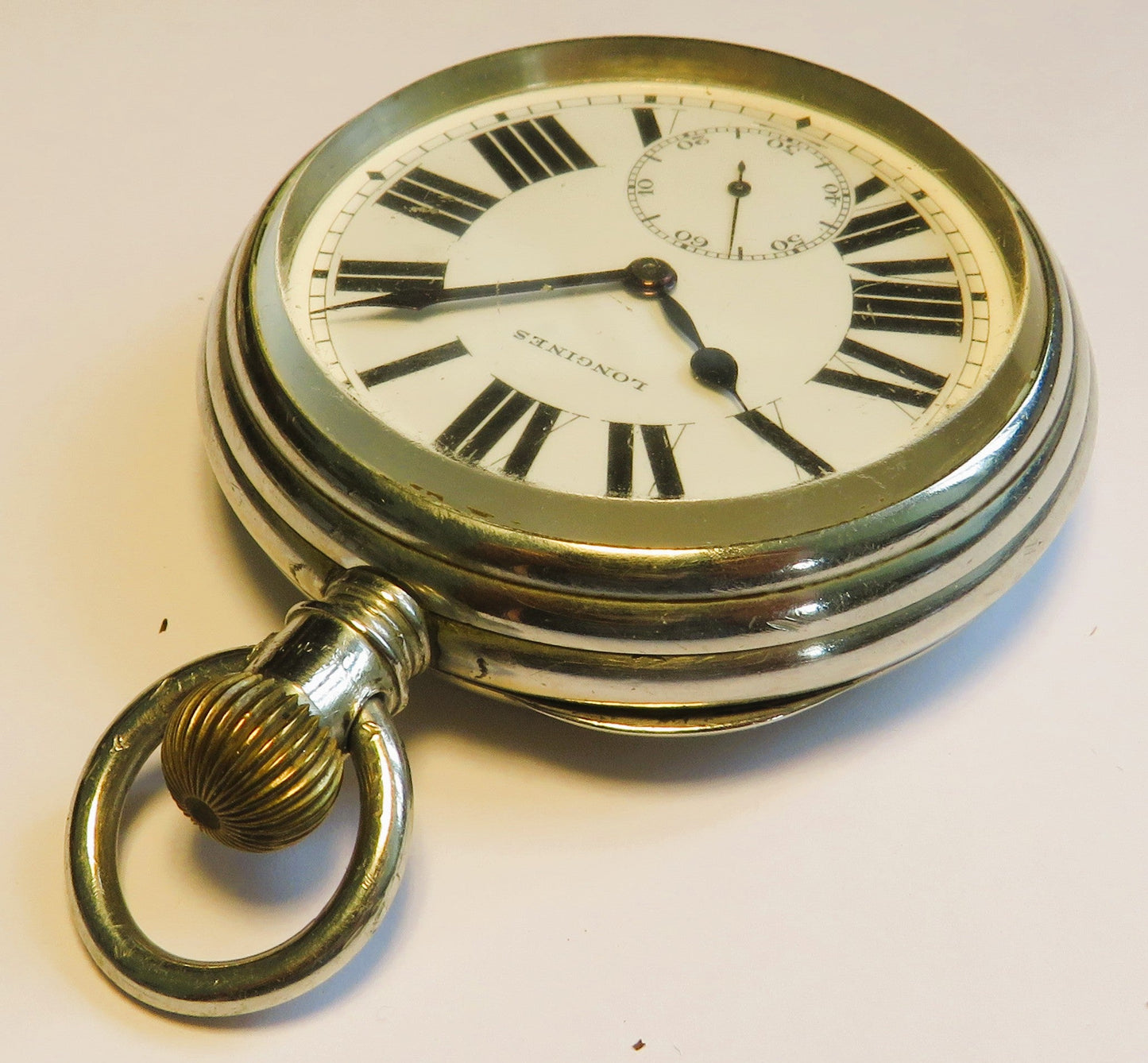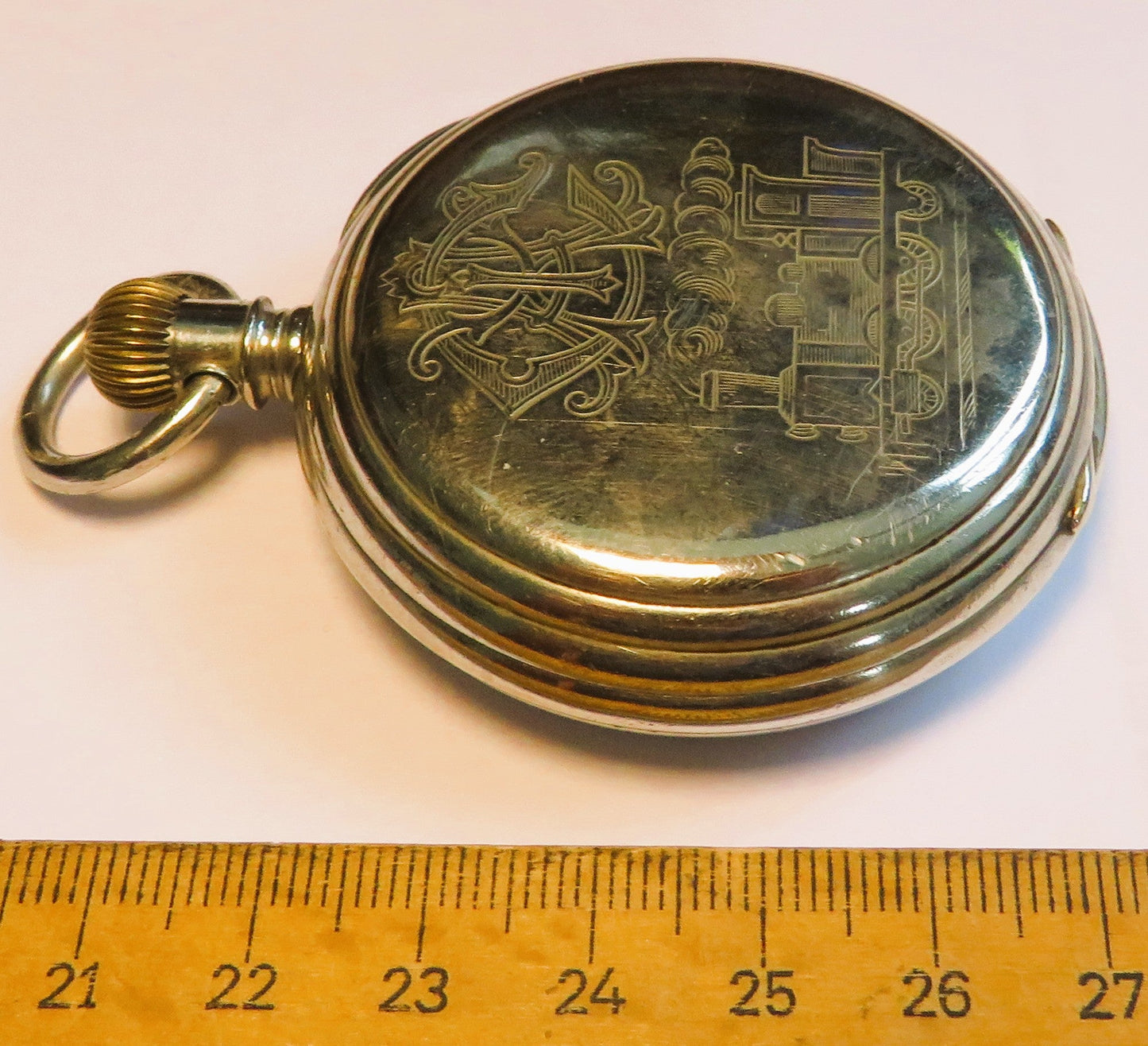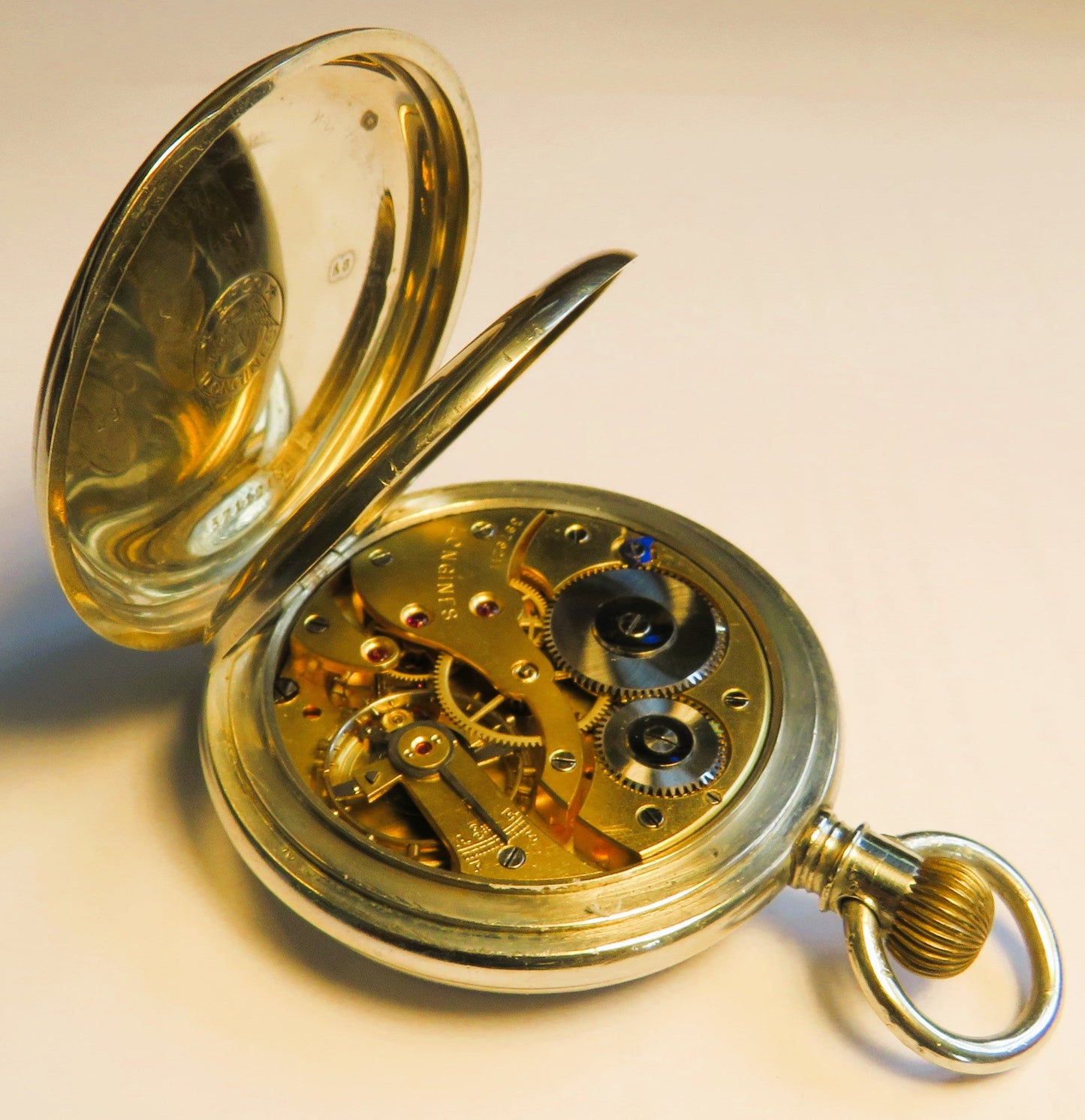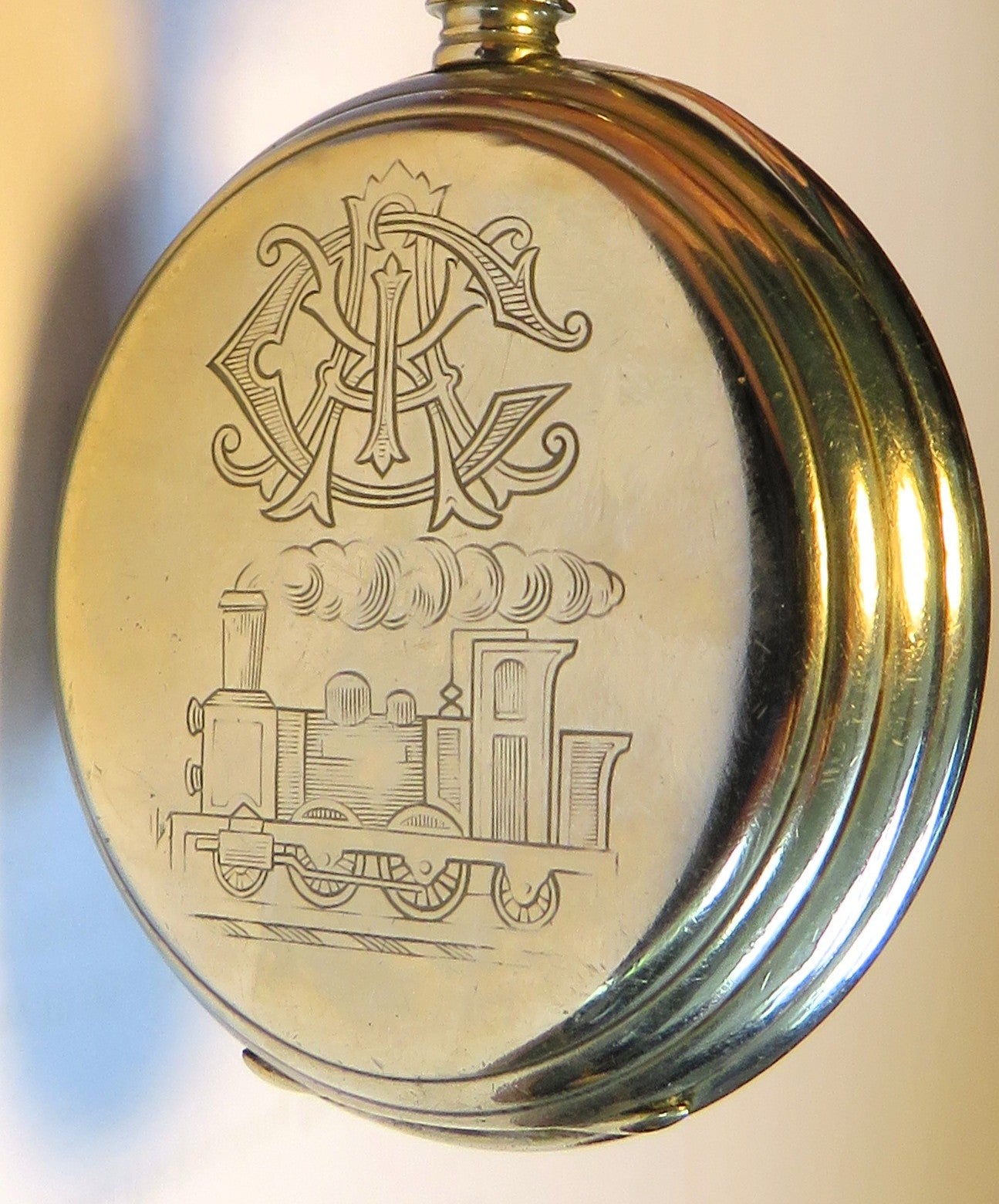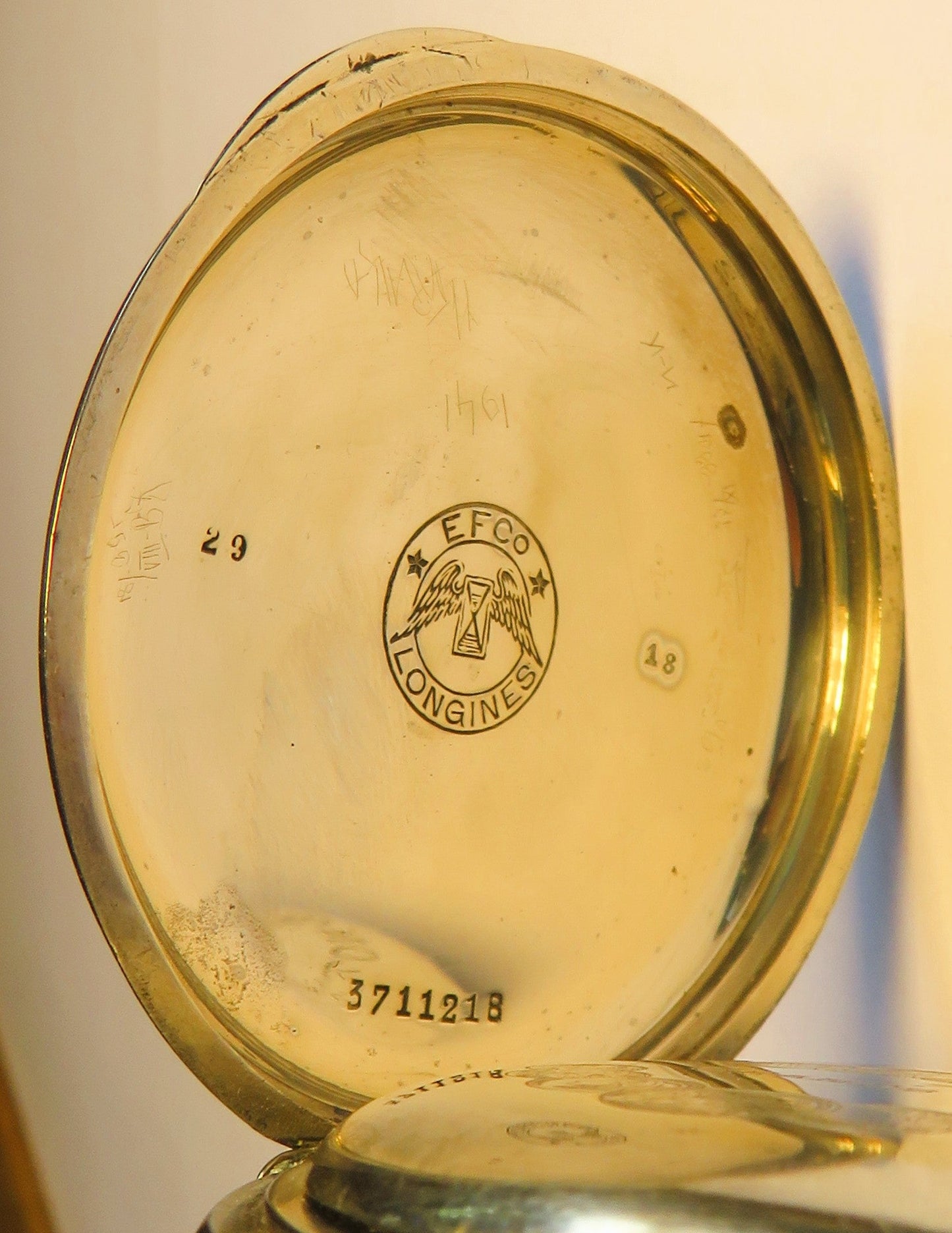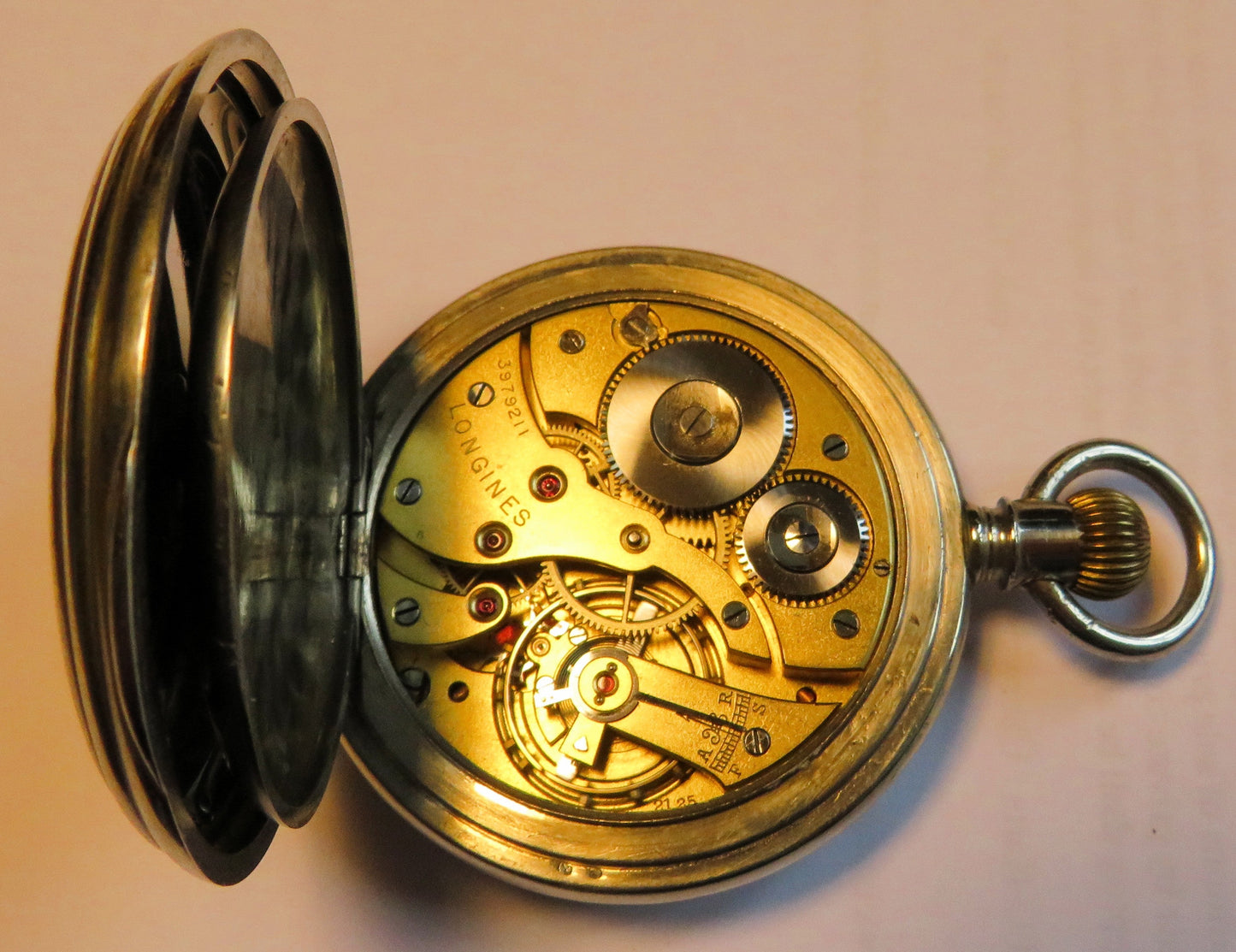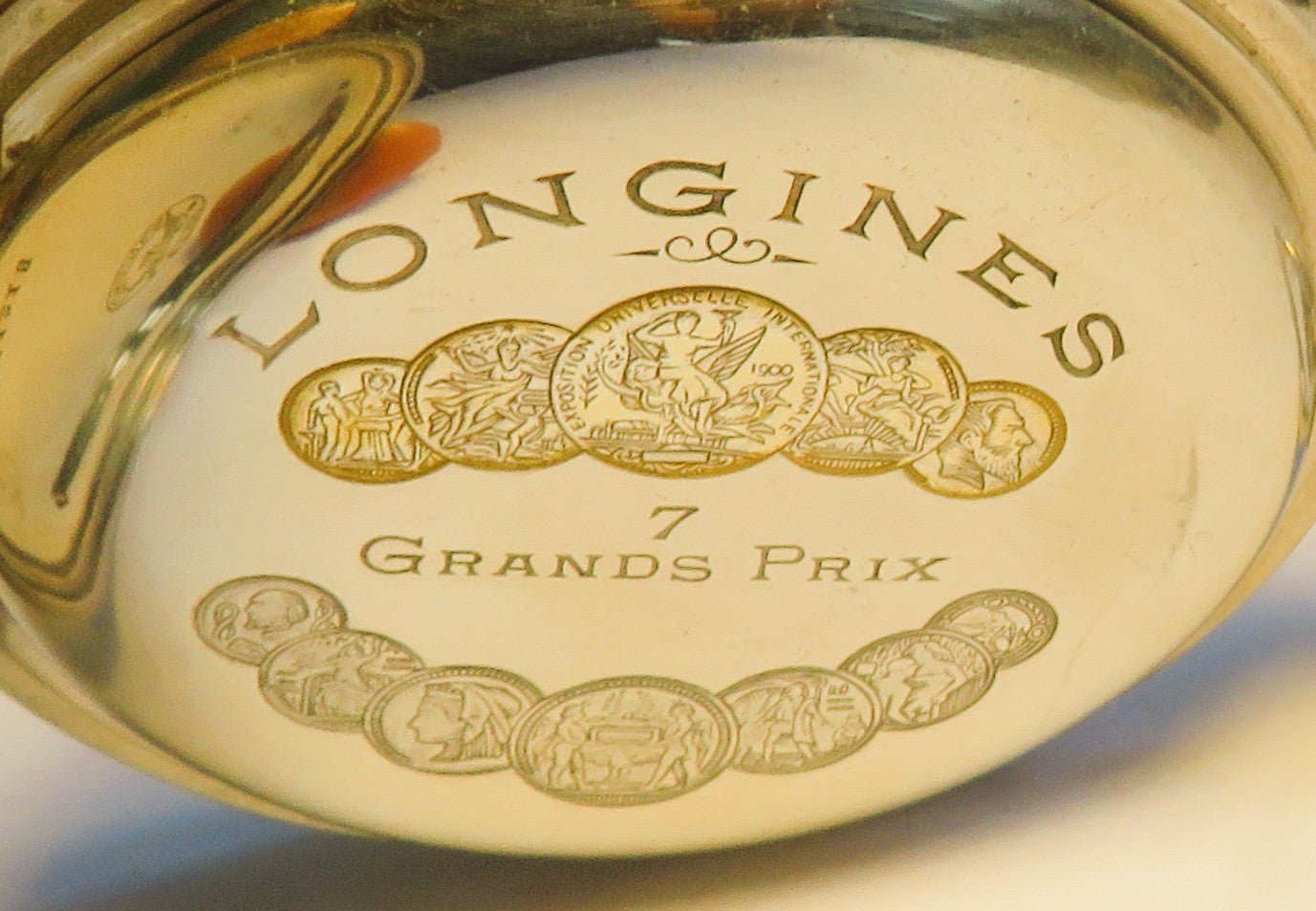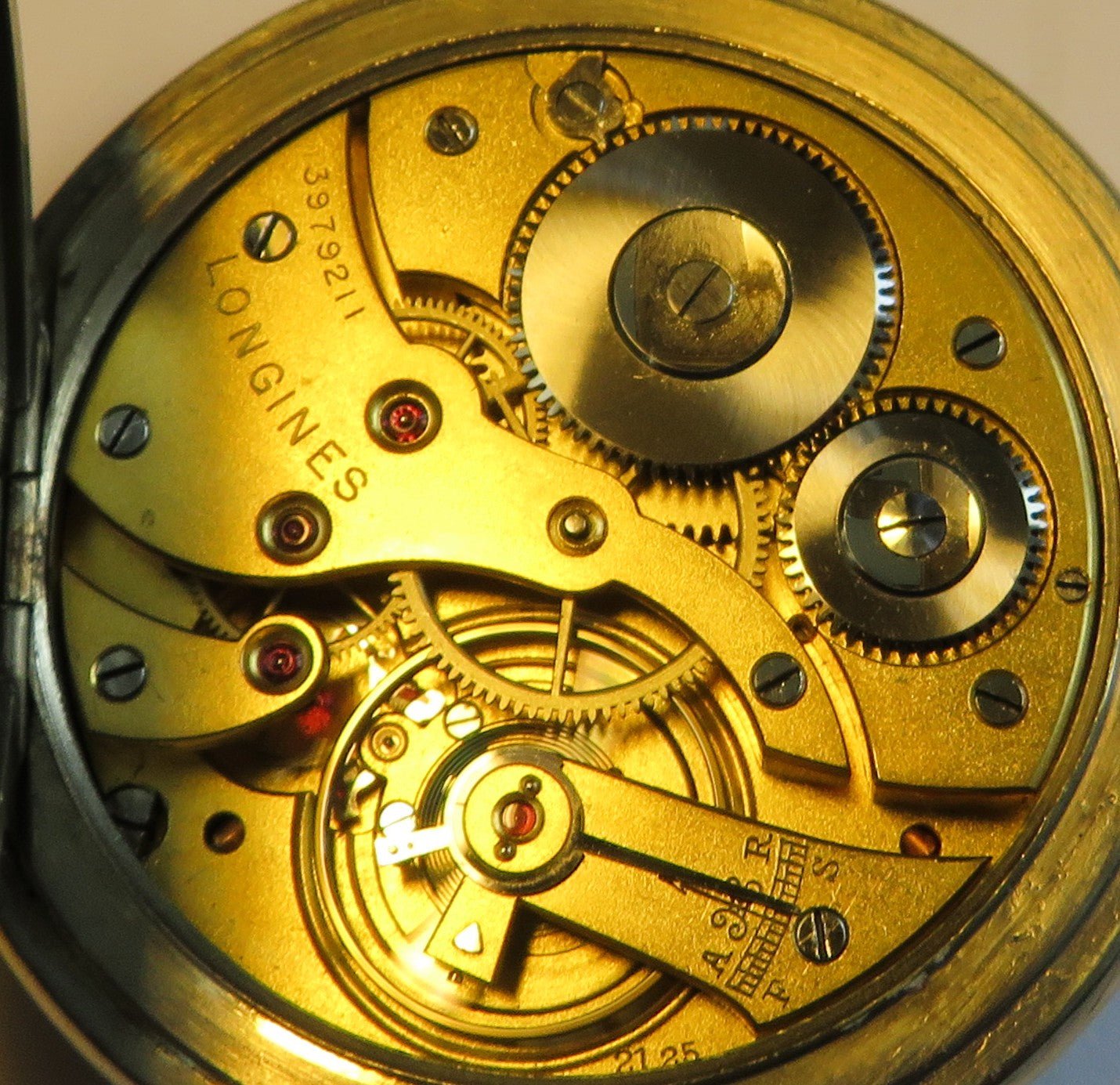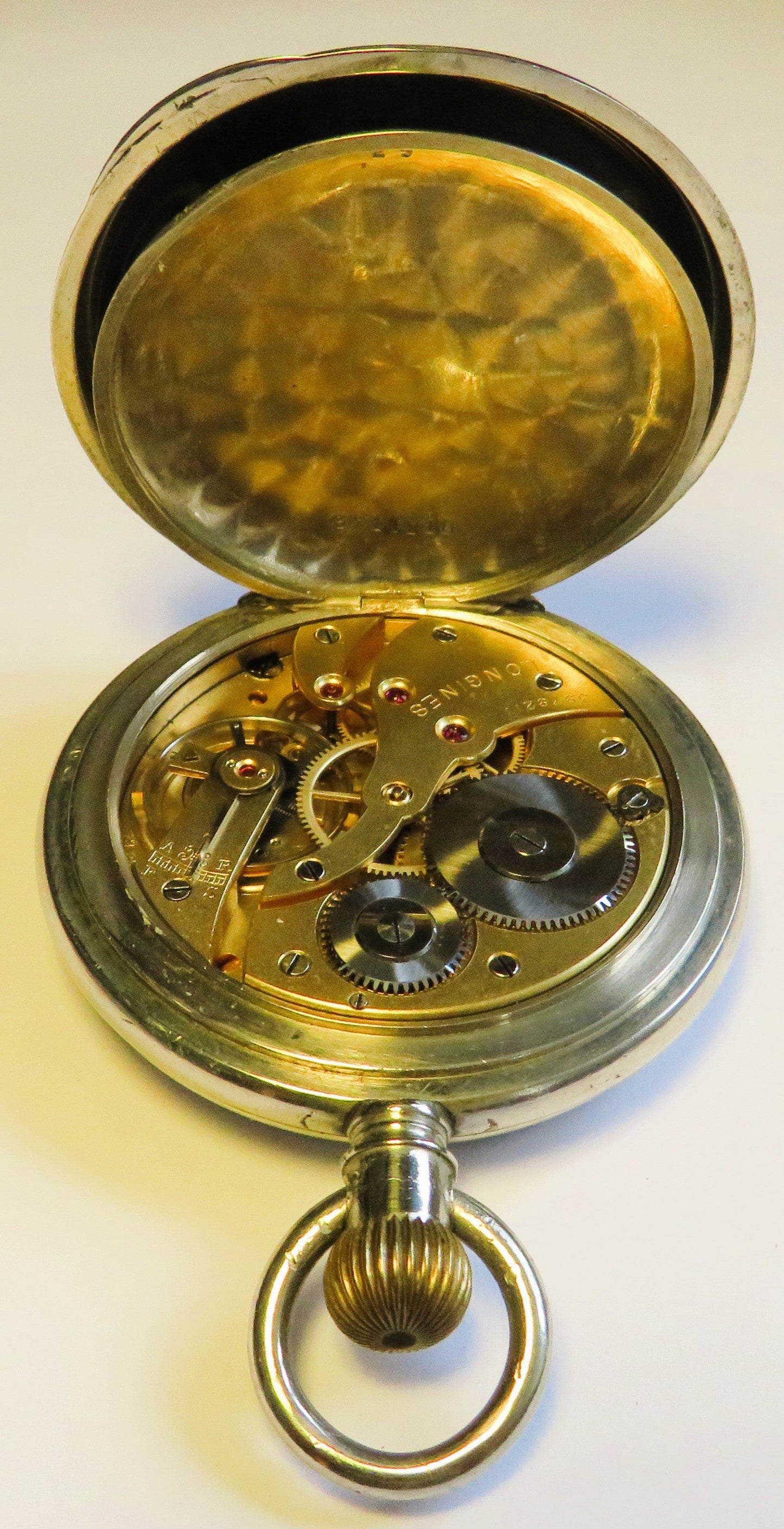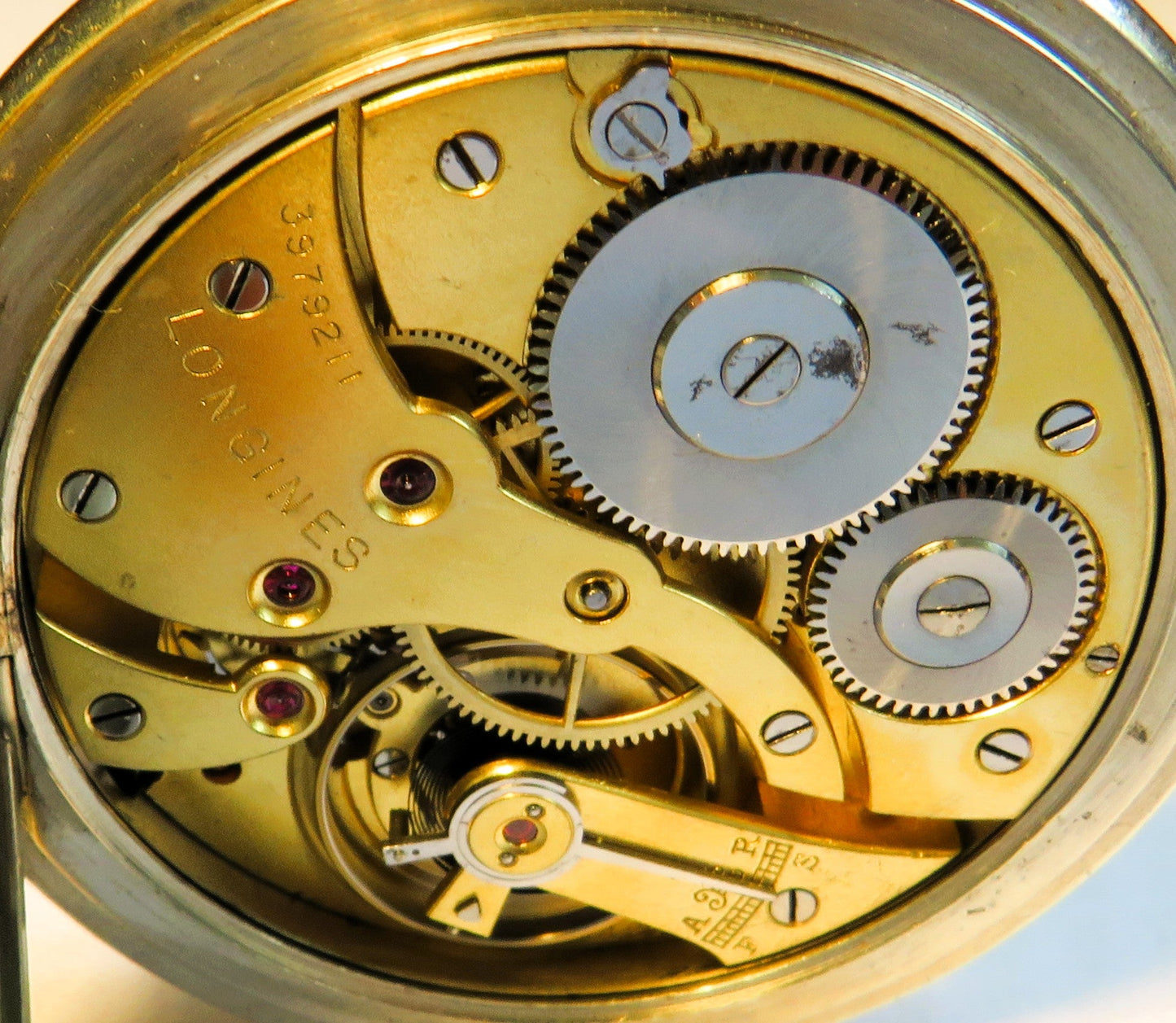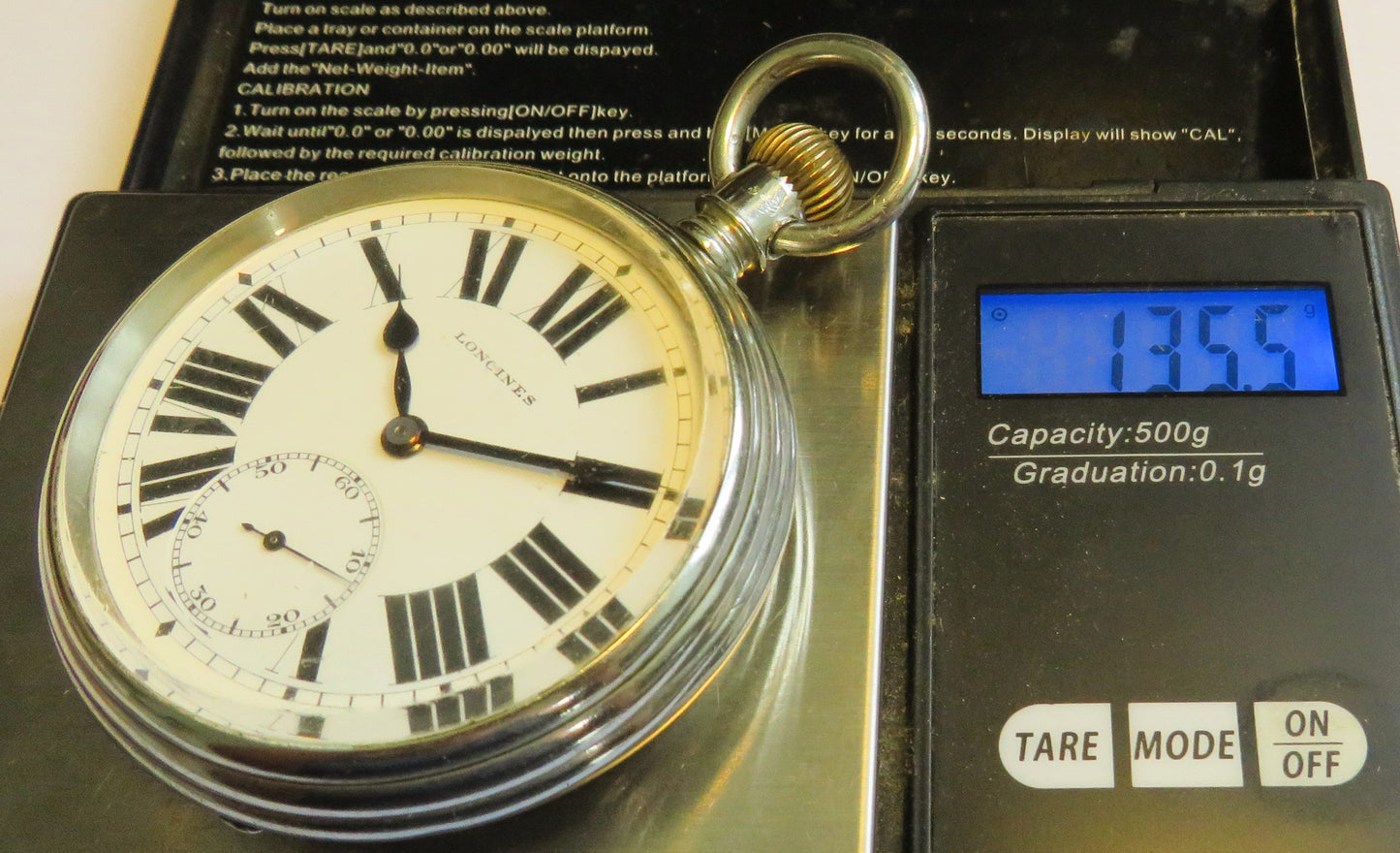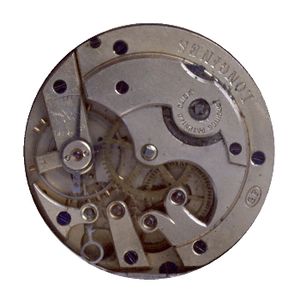Sammler-Uhren
Longines Cal. L 21.25 large railwayman's pocket watch circa 1920
Longines Cal. L 21.25 large railwayman's pocket watch circa 1920
Couldn't load pickup availability
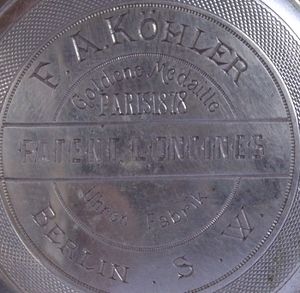
awarded a gold medal at the World Exhibition in Paris in 1878.
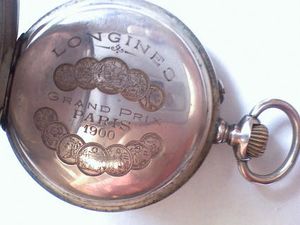
>awarded the Grand Prize La Renommee at the World Exhibition in Paris in 1900.
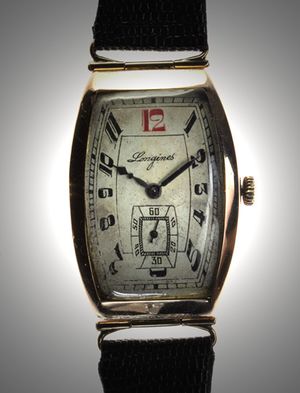
Men's wristwatch from the 1920s.
Swiss watch manufacturer
Story
Agassiz & Co.
(see also: Agassiz Watch Co. )
On February 25, 1833, Auguste Agassiz , together with watch dealer Henri Raiguel and Florian Morel, founded Raiguel Jeune & Co., a company for the manufacture and distribution of utility watches, in Saint-Imier , Switzerland. After Henri Raiguel's departure in November 1838 , the company operated under the name Agassiz & Co. Agassiz exported Watches to the USA. For example, JA ABRY took over the Agassiz company's commercial agency in New York. After Florian Morel's retirement on December 31, 1846 , Auguste Agassiz became the sole owner of the company. His resilient Agassiz presents watches “in the style of Saint-Imier” at trade fairs throughout Europe and quickly gains a good reputation.
Due to his failing health, Agassiz handed over management of the company to Edouard Savoye in the early 1850s. At Auguste Agassiz 's request, his nephew Ernest Francillon joined the company in mid- 1852 . In 1853 , Ernest Francillon went to Val-de-Travers for a year to familiarize himself with watchmaking and sales. From 1854, he assumed management positions at Agassiz.
Ernest Francillon & Co.
On July 1, 1862, Ernest Francillon took over the manufactory from Agassiz (Agassiz became a limited partner). Soon, more than 20,000 watches (open pocket watches with cylinder and lever escapements, as well as small ladies' watches) were being produced annually. To convert watchmaking to serial production, the company decided to build a new watch factory.
E. Francillon, Longines, Suisse
In 1866, Ernest Francillon acquired some land outside the village of Saint-Imier , in the meadows of the Langgewann (Es Longines) district . In 1867 , with the active assistance of engineer Jacques David, he built a pocket watch bearing the name "E. Francillon, Longines, Suisse."
In 1873, Jaques David became technical director and limited partner.
In order to protect themselves against counterfeiting, from 1874 onwards the
The winged hourglass is applied to all movements and cases. Exceptions are movements that were signed by the customer on behalf of the customer.
The successful presentation of the watches at the 1878 World's Fair in Paris brought a flood of orders, including from the USA. In the same year, the first chronograph movement, the Longines 20H caliber, was developed. Demand for the Longines 18L open-winding caliber could barely be satisfied. In 1879, the factory was expanded. Jacques David was appointed to the management team. Only movements that were cased in the USA for customs purposes were produced for the American market. From 1885 onward, the sales success of Longines watches in the USA was primarily due to the Wittnauer watch dealership.
In 1886 , the Chasseral clock, a cheap anchor clock with a winding mechanism on the bow and a nickel case, was manufactured and put on the market in order to effectively counter the American competition ( Waterbury system).
The name "Longines" was registered with the Federal Office of Intellectual Property on May 27, 1889. On March 27, 1893 , it was registered with the International Office of Intellectual Property, becoming the oldest registered watch brand in the world.
After Francillon's death in 1900 , Jacques David, Baptiste Savoye, and Louis Gagnebin led the company. The first mechanical ladies' pendant watches were created in 1903. Two years later, the first mechanically manufactured wristwatch followed, eventually replacing the pocket watch in 1919. In 1907, Adrian Francillon, a nephew of Ernest Francillon, joined the company.
In the service of timekeeping
In the following years, Longines revolutionized timekeeping in sports and supported scientific expeditions. Based on his experience with the problem of rapid positioning, American aviation pioneer Charles A. Lindbergh advised Longines on the development of a special wristwatch ( an hour angle watch ) that would enable quick and easy longitude determination.
In 1945, Longines launched the first self-winding watch. In 1952 , Longines became the Official Timekeeper of the Oslo Winter Olympics. In 1960, the world's thinnest electromagnetic movement of its category was developed. In 1961, Longines acquired a majority stake in Record Watch , thus becoming the owner of the company. In 1967, the "Ultra-Chron" model was launched, a high-precision automatic wristwatch with 36,000 vibrations per hour. In 1969, the "Ultra-Quartz" was introduced.
Part of the Swatch Group
With the advent of quartz watches, the company, like many other watch manufacturers, ran into financial difficulties in the early 1980s. Longines was subsequently integrated into the SMH Group, at the time the largest Swiss watch manufacturer, which in turn was absorbed into the Swatch Group, now the world's largest watch company. The current model range includes both classics with mechanical movements, such as the Longines Lindbergh , and quartz watches.
In 2007 , as a tribute to the first true pilot's watch in watch history, the Longines Weems navigation watch (then the forerunner of the Longines Lindbergh ), a model called the Longines Weems Second-Setting Watch was launched.
